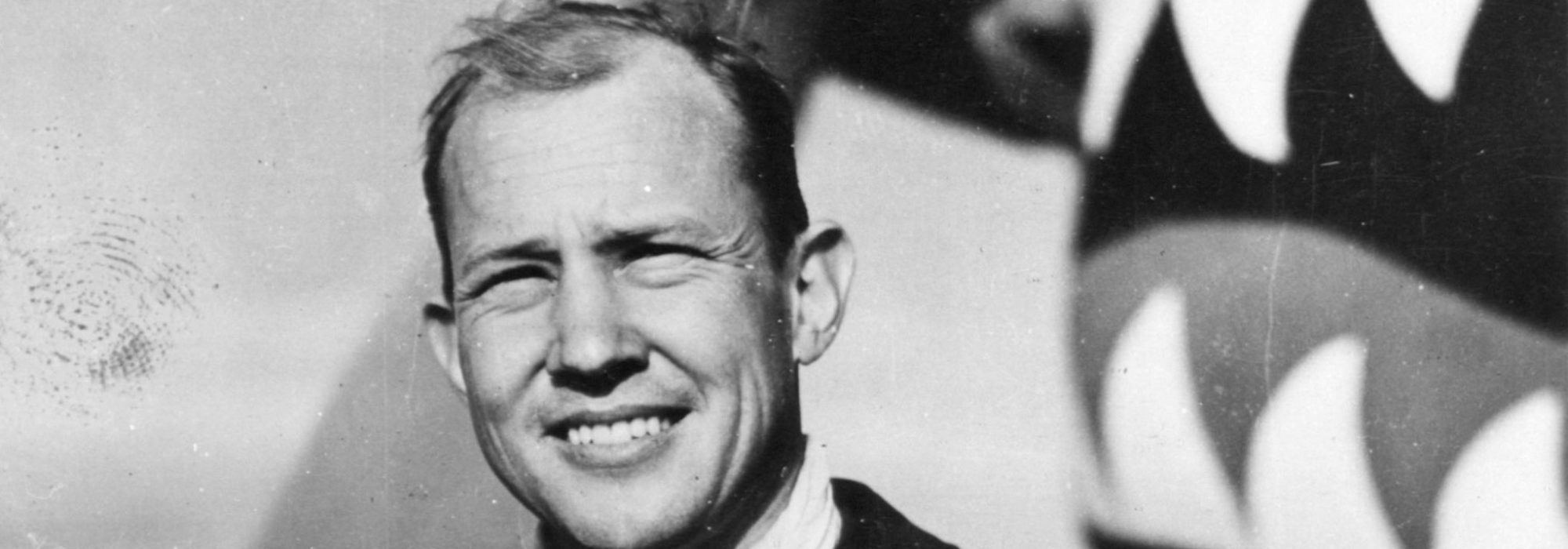The versatile John Alison gained distinction as a fighter pilot, Lend-Lease officer, aerial ace, and founder of the air commandos.
In late 1940, Generalissimo Chiang Kai-Shek sent a delegation to the United States to acquire airplanes for the Chinese air force. Their American adviser, Claire L. Chennault, set up a demonstration of the Curtiss P-40 Warhawk at Bolling Field in Washington.
In the five-minute show, the P-40 whipped through turns and maneuvers that even Curtiss did not know it could perform. Mightily impressed, one of the Chinese officials said, “We need 100 of these.”
“No,” Chennault replied, “you need 100 of these,” pointing to the pilot he had chosen to conduct the demonstration, Lt. John R. Alison, 28.
Alison was as an Airman of exceptional ability. He once landed a P-40 after the entire rudder had been shot away. He would eventually get to China as a member of Chennault’s Flying Tigers, but not yet. The War Department had more pressing work for him.
In the spring of 1941, he went to London on behalf of the Lend Lease program to help the British get the most out of the P-40s they had obtained from the United States. Later that year, he transferred to Moscow in a similar role to assist the Russians in the assembly, maintenance, and operation of their P-40s.
The attack on Pearl Harbor drew the United States directly into the war. In July 1942, Alison was assigned to the Flying Tigers in China as deputy commander of one of Chennault’s top squadrons.
The Japanese fighters, mostly Nakajima Ki-27s and Ki-43s, were rated as superior to the Flying Tiger airplanes but that depended on who was flying the P-40. In his first aerial combat, Alison shot down two enemy aircraft with a third probable but unconfirmed. In a matter of months, he was an ace with six victories in the air and one airplane destroyed on the ground.
In 1943, he was recalled to Washington. Once again, there was a special job with his name on it. The eccentric British general Orde Wingate was about to start a large irregular operation deep in the Burmese jungle to oust the Japanese occupation force.
Gen. Henry H. “Hap” Arnold sent for the two most capable lieutenant colonels in the Army Air Forces—Alison and Phillip Cochran, the model for “Flip Corkin” in “Terry and the Pirates” comic strip—to help Wingate. They were promoted to colonel and tasked to form a new kind of unit, called “air commandos” by Arnold. Cochran was the commander, Alison the vice commander.
Wingate’s invasion would launch from India. Everything—Wingate’s “Chindit” soldiers, their horses and mules, all supplies and reinforcements—had to be transported to Burma by air. Attack aircraft would support the Chindits in combat.
When the invasion began March 5, 1944, Cochran remained at the headquarters in India while Alison led the operational force to Burma. The first aircraft in were Waco CG-46A gliders, carrying teams that would land in a clearing, suppress any enemy forces found there, and construct airstrips in the jungle. Alison was pilot of the first glider, even though he had never flown a glider before.
The gliders got most of the men and equipment down with minimum casualties. That night they delivered 539 men, three animals, and 65,972 pounds of stores, including bulldozers.
Within 24 hours, the invaders had widened the clearing and prepared an airstrip. The C-47 transports were close behind. The Japanese were soon under effective attack by more than 9,000 of Wingate’s troops.
Three weeks into the operation, Alison was summoned again by Arnold. He departed in a damaged British C-47. Alison had not previously flown a C-47, but that made no difference.
At Arnold’s direction, Alison organized several more air commando groups, deploying with one of them to the southwest Pacific where he finished the war as operations officer for 5th Air Force.
Alison and Cochran are recognized today as founders of the air commandos and honored as the originators of Air Force special operations.
In 1947, Alison left Active duty and became assistant secretary of commerce for aviation. He subsequently retired from the Air Force Reserve as a major general and went on to be elected president and chairman of the board of the Air Force Association.
He never lost his affinity for flying. Years later, when Alison was almost 90, he was offered a ride in a restored P-40. He declined. He had no interest in going unless he got the pilot’s seat and flew the airplane himself.
